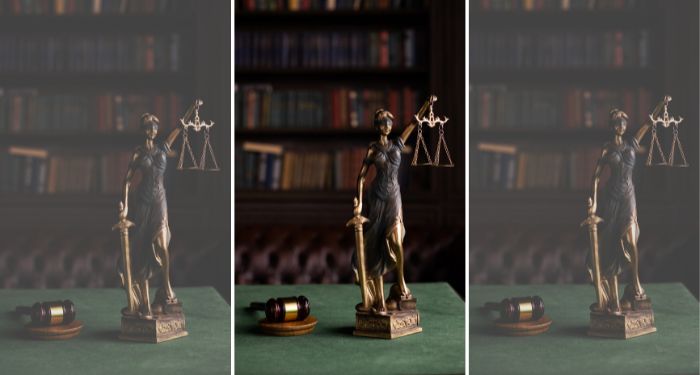
Stranger Than Fiction: Crime in the Library
Libraries have often been locations for fictional crimes. Agatha Christie’s The Body in the Library uses the setting of a private library in a country house as what appears at first to be a grisly murder scene. In Sulari Gentill’s The Woman in the Library, the Boston Public Library becomes the setting for a locked-room mystery where four strangers are thrown together by circumstance, and realise as they get to know each other that they all have ulterior reasons for being there – in one case, murder. Cyberpunk author Jeff Noon’s The Body Library sees detective John Nyquist in a world where imagination becomes reality, and the titular library’s stories complicate Nyquist’s investigation of a murder.
Real-world libraries have also had their brushes with crime, from the deadly to the mundane, and even the weird. In some ways, it’s understandable that libraries can become targets for crime – many libraries have rare books that make lucrative hauls for thieves, and thefts of library user’s possessions, such as wallets, phones and laptops, is hardly an unusual occurrence. Theft might be the most common crime in the library – and sometimes can cross over into the kind of audacious heists that thrillers are made of – but it isn’t the only kind of crime that people have committed in libraries.
Crime in the Library
Book Thieves
Books of all kinds are frequent targets for theft in the library. It’s not only the rare, expensive books that are taken – people often steal books for their own use, with Huckleberry Finn being recorded as the “most stolen” book of all time. Other sources suggest that the Guinness Book of World Records is a popular choice for library book thieves, perhaps to settle arguments at home.
Major library thefts, with huge hauls of rare books taken by teams of professional thieves, are something that libraries with these expensive volumes have to prepare for. In an Independent article on rare book heists, we learn how a manager at the Carnegie Library was the inside man who facilitated the stealing of about $8 million of books over two decades. Libraries often have steps to stop members of the public stealing rare books, including monitoring readers who are looking at especially valuable tomes, but members of staff who want to steal rare books, like the manager at the Carnegie, will be able to find ways to get around these restrictions.
Sometimes book thefts don’t come to light for years. In 2013, it was reported that several valuable books that had been stolen from Lambeth Palace Library, home to a large collection of rare volumes, had now been located. The books were discovered to be missing in the ’70s, but the thief had used the fact that many books in the collection had been damaged during a bombing raid during the Second World War to hide the fact that the volumes had been taken. The location of the stolen books was unknown until 2011, when a letter written by a late employee of the library was delivered, revealing that the books were stored in the deceased’s attic.
Violence in the Library
Thefts aren’t the only crimes that take place in libraries, although they are by far the most common. Being a public space, accessible to everyone, libraries can sometimes be attended by people who are having a bad day and decide to take it out on members of staff or other members of the public, or who decide to kick off about other issues. According to a report from last year, around 6000 incidents of severe anti-social behaviour took place in libraries over the last five years, a sharp increase. Many of these incidents are a result of desperation – the stress of lack of support during the cost of living crisis taking its toll – but in some cases, attacks are more targeted.
I’ve previously written about how libraries in the UK are facing intimidation by the far-right in response to drag queen story hour, something that is also increasingly happening in the U.S. The New York Times has detailed other hate crimes targeting libraries, including Islamophobic abuse, antisemitic graffiti, and other white supremacist signalling. While distressing, it’s perhaps unsurprising that libraries are targeted for hate crimes – people who espouse narrow thinking and a lack of tolerance will lash out against places that encourage critical thinking, looking at a broad range of perspectives, and being an accepting and open place for all.
While The Body in the Library is fiction, libraries have, on occasion, been the locations of murders. One of the most famous is the murder of Betsy Aardsma, a student who was killed in the library at Penn State in 1969. Despite the crime taking place in the afternoon in a library that was in use by several other students, the murder was never solved.
Weird Library Crimes
Book thefts are mercenary, and attacks in the library are rare but upsetting; however, libraries have also been known to play host to much weirder crimes, and are the subject of some very specific laws. In the UK, it’s illegal to gamble in a library, and you’re also not allowed to enter your local library if you’re carrying an infectious disease, under the Public Health Act 1984.
One of the weirdest recent crimes connected to libraries, however, is the case of John Darwin. Often referred to as “Canoe Man” Darwin, he faked his own death by pretending to drown at sea after paddling out in his canoe (in fact, he sneaked back to shore and secretly moved back into the house next door to his wife and accomplice – their adult children were completely unaware of the plan, and truly believed that their father had died). The pair planned to claim Darwin’s life insurance and move to Panama, but were discovered. Darwin claimed he had amnesia and could not remember anything from the time he went missing, but this story was proven to be false when police discovered that he’d applied for a library card under his new, made-up identity.
Though libraries can be the scenes of many different kinds of crimes, they can also be safe places for a huge number of people, as explored in our article Libraries Are My Safe Space. This is particularly true for children, which is why book bans and other legislation that threatens this safety must be challenged, as we can see in Book Bans are Driving Kids Away from Libraries and Reading.










